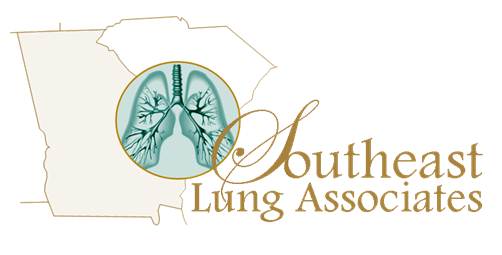Sleep Disorders
According to the National Institute of Neurological Disorders and Stroke, chronic, long-term sleep disorders affect at least 40 million Americans each year. Left untreated, sleep disorders, and the resulting sleep deprivation, will likely interfere with your work, driving, and social activities and have negative effects on your physical and mental well-being.
What is a sleep disorder?
- difficulty falling or staying asleep,
- difficulty staying awake during the daytime (excessive sleepiness),
- sleeping too much,
- difficulty sleeping during normal sleep hours at nighttime,
- abnormal behaviors during sleep which disrupt sleep, or
- unrefreshing sleep.
What is a sleep disorder?
Many people complain that they can’t fall asleep or stay asleep, or that they are sleepy during the day, but few consider these to be symptoms of a sleep disorder. Sleep deprivation is a symptom of a sleep disorder.
- feel irritable or sleepy during the day?
- have difficulty staying awake when sitting still, such as when watching television or reading?
- fall asleep sometimes while driving?
- have difficulty paying attention or concentrating at work, school, or home?
- perform below your potential in work, school, or sports?
- often get told by others that you look tired?
- have difficulty with your memory?
- react slowly?
- have emotional outbursts?
- feel like taking a nap almost every day?
- require caffeinated beverages to keep yourself going?
- Insomnia
- Sleep apnea sleep disorder
- Restless Legs Syndrome (RLS) and Periodic Limb Movement Disorder (PLMD)
- Narcolepsy
Insomnia
|
Insomnia |
|
|
Symptoms and Forms of Insomnia
|
Treatment Approaches for Insomnia
|
|
|
Sleep apnea sleep disorder
|
Sleep Apnea Sleep Disorder
|
|
|
Symptoms of Sleep Apnea
|
Treatment for Sleep Apnea
|
|
|
Restless Legs Syndrome (RLS)
|
Restless Legs Syndrome (RLS)
|
|
|
Symptoms of Restless Legs Syndrome
|
Treatment for Restless Legs Syndrome
|
|
|
Periodic Limb Movement Disorder (PLMD)
|
Periodic Limb Movement Disorder
|
|
|
Symptoms of Periodic Limb
Movement Disorder |
Treatment for Periodic Limb
Movement Disorder |
|
|
Periodic Limb Movement Disorder (PLMD)
|
Periodic Limb Movement Disorder
|
|
|
Symptoms of Periodic Limb
Movement Disorder |
Treatment for Periodic Limb
Movement Disorder |
|
|
Narcolepsy
|
Narcolepsy
|
|
|
Symptoms of Narcolepsy
|
Treatment for Narcolepsy
|
Less common:
|
A combination of:
|
How are sleep disorders diagnosed?
- your description of symptoms,
- your age and gender,
- your psychological history,
- your medical history, and
- a family member’s or partner’s observation of your disruptive sleep patterns.
- Epworth Sleepiness Scale-This sleep questionnaire asks you to rank whether certain situations make you sleepy and, if so, how sleepy. Your responses assist your doctor in providing a formal diagnosis.
- Nocturnal polysomnogram -This test measures the electrical activity of your brain (electroencephalogram) and heart (electrocardiogram), and the movement of your muscles (electromyogram) and eyes (electro-oculogram), and usually requires an overnight stay at a sleep clinic for observation purposes.
- Daytime Multiple Sleep Latency Test (MSLT) -This test measures how long it takes for you to fall asleep during the day, plus the kind of sleep you get during such a nap. Sleep specialists analyze your brain waves (EEG), heart rate (EKG), muscle activity, and eye movements.
- Repeated test of sustained wakefulness (RTSW) -This test measures how long it takes for you to fall asleep in a situation that challenges you to stay awake. During the test, you are placed in a quiet room with dim lighting, told to close your eyes, and asked to stay awake.
- Blood test – Depending upon your description of your symptoms and your personal and family medical histories, your sleep specialist may also conduct a blood test. The blood test may not be conclusive but can be helpful in establishing the possibility and probability of certain sleep disorders.
You can address most common sleep problems through lifestyle changes and improved sleep hygiene (see Tips for a Good Night’s Sleep), but it is important to see your doctor or a sleep specialist for a diagnosis if your sleep does not improve.
Am I at risk for developing a sleep disorder?
- poor sleep environment (e.g., too noisy, too brightly lit, too hot, or too cold)
- excessive caffeine or alcohol
- use of certain medications and drugs
- smoking or chewing tobacco
- anxiety, depression, or another mood disorder
- stress, such as the death of a loved one, or job pressure
- an unhealthy sleep routine
- daytime napping
- early or late-night bedtimes
- traveling between time zones
- shift work with a rotating schedule
- illness
- obesity
How can I prevent a sleep disorder?
- educating yourself about the sleep cycle, sleep stages, and common sleep disorders,
developing a healthy sleep routine, and - talking with your doctor or a sleep specialist about your sleep concerns.
What are the categories or major types of sleep disorders
- Dyssomnias
- Parasomnias
- Sleep disorders due to medical, neurological, or psychiatric conditions
- Other proposed sleep disorders
|
Categories or Major Types of Sleep Disorders
|
|
|
Major Type or Category
|
|
|
Dyssomnias – Disturbance in the amount, timing, or quality of sleep. Dyssomnias result in excessive daytime sleepiness or an inability to fall asleep or stay asleep. Dyssomnias can originate from causes inside or outside the body.
|
|
|
Parasomnias– Disorders of partial arousal from sleep, or disorders that interfere with sleep stage transitions. Behaviors not normally associated with sleeping may occur during sleep.
|
|
|
Proposed sleep disorders – Similar to other classified sleep disorders, but different enough to be considered distinct sleep disorders.
|
|
